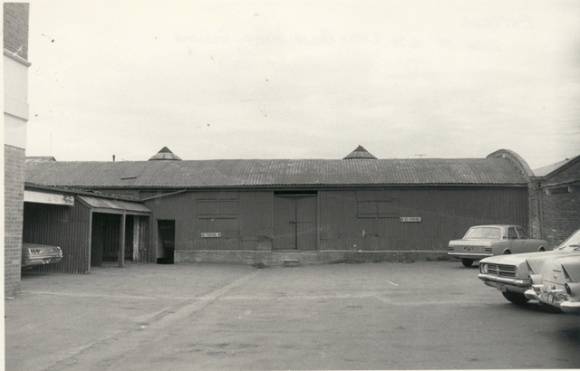| Back to search results » | Back to search page » |
|
PORTER PREFABRICATED IRON STORE ORIGINALLY IN GEELONG
Other NamesFORMERLY AT 71 LITTLE MALOP STREET GEELONG , IRON STORE , PORTERS PREFABRICATED BUILDING , PORTER IRON STORE , PORTER'S PREFABRICATED BUILDING , PREFAB BUILDING LocationSOVEREIGN HILL, BRADSHAW STREET GOLDEN POINT, BALLARAT CITY
File Number11/011208LevelRegistered |
|
Statement of Significance
What is significant?
The Porter prefabricated iron store was manufactured by John
Henderson Porter of Birmingham. It was erected in 1854, complete with
bluestone foundations and a cellar, at 71 Little Malop Street, in the
central part of Geelong, for William Roope, a local merchant. Porter
was the principal portable iron building manufacturer of the mid
nineteenth century in Britain, and was an innovator in the manufacture
of corrugated iron-clad buildings, including stores, schools and
industrial buildings. The various manufacturers used different systems
of prefabrication. Porter's buildings were supported by a cast and
wrought iron frame and clad with corrugated iron. The cast iron wall
stanchions had a characteristic cruciform cross-section, they could be
bolted down at the base and also provided for the fixing of horizontal
girts at three heights in the wall. They were stamped with the
manufacturer's name: 'J H PORTER BIRMINGHAM'. The Little Malop Street
site was later owned by the Cheetham Salt Works, who by 1970 needed
the land for new offices, and donated the iron building to the Geelong
Historical Society. It was dismantled and put into storage in 1971,
with the hope that it would form part of a proposed museum, but this
did not eventuate, and it was transferred to Sovereign Hill in
Ballarat in 1984, where (in 2010) it is still stored. A detailed
measured drawing and photographic record was undertaken prior to
dismantling to facilitate future reconstruction. The Porter store formerly at 71 Little Malop Street, Geelong, now
dismantled, was a prefabricated corrugated iron-clad rectangular plan
shed with a segmental arched roof. When erected it measured 21.0 x 9.1
metre (69 x 30 ft), was 4.6 metre (14 ft 9 ins) high to the top of the
roof and had a wall height of 2. 7 metre (9 ft). The wall and roof
sheets were formed from 1.5 mm (1/16 in) galvanized corrugated iron
with a 127 mm (5 in) pitch, with the corrugations running vertically.
The load from the roof was transferred to the foundations via wrought
iron top wall plates then to cast iron wall stanchions. The maker's
name, 'J H PORTER BIRMINGHAM', can be seen on the wall stanchions. The
corner and door stanchions are heavy cast iron angle sections. The
windows were unglazed with inward opening corrugated iron casement
shutters. Above the doors in each end wall were circular cast iron
vents. Three conical skylights 1.5 m (5 ft) in diameter were located
on the crown of the roof. On at least one of the wall girts is stamped
the name 'Eagle', probably the name of the foundry where the members
were made.
How is it significant?
The Porter prefabricated iron building formerly at 71 Little Malop
Street in Geelong is of historical and technical significance to the
state of Victoria.
Why is it significant?
The Porter prefabricated iron store is historically significant as a
now rare example of the many prefabricated iron buildings which were
imported into Victoria during the Victorian gold rushes. It is a
reflection of the economic and social conditions in the early 1850s,
when there was a great increase in population and a rush of labour to
the gold fields, and both labour and building materials were scarce.
It is an early example of the use of a building material, galvanised
corrugated iron, which was to become closely linked with Australian
building, especially for utilitarian buildings. The Porter prefabricated iron store is technically significant as a
now rare example of the early use of galvanised corrugated iron for
the manufacture of prefabricated buildings, and of the prefabrication
system of the major English manufacturer J H Porter. Most of the early
manufacturers of corrugated iron buildings were British, and J H
Porter was the principal portable iron building manufacturer of the
mid 19th century in Britain. The structure is of critical importance
in the history of technology in the nineteenth century. It is one of
only two known surviving examples in the world of a prefabricated iron
building manufactured by J H Porter (the other standing in the Yarra
Municipal Depot at North Fitzroy, H2243).
Group
Commercial
Category
Warehouse/storage area













